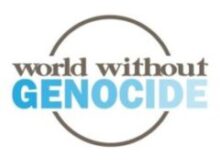By Jacob Simpson, Research and Advocacy Associate
International Humanitarian Law (IHL) refers to the general body of law that regulates the conduct of war. IHL scholar Amanda Alexander set forth a clear definition of IHL, which “aims to protect persons who are not or are no longer taking part in hostilities, the sick and wounded, prisoners and civilians, and to define the rights and obligations of the parties to a conflict in the conduct of hostilities.”
This definition highlights the two main objectives of IHL: (1) to regulate what combatants can and cannot do during warfare, and (2) to protect individuals made vulnerable by war.
The origins of IHL can be traced back to the 19th century, when Francis Lieber in the United States and Henry Dunant in Europe independently advocated for regulations that should be placed upon warfare.
In 1950, Lieber and Dunant’s calls for regulation had been amplified by the horrors of two global wars, and world powers recognized the need for an international body of law to regulate the conduct of war. The result was the four Geneva Conventions, which remain the base of IHL to this day.
The First Geneva Convention protects wounded and sick soldiers on land during war. The Convention gives legal protection to wounded and sick soldiers as well as religious and medical personnel who are assisting wounded and sick soldiers.
The Second Geneva Convention protects wounded, sick, and shipwrecked military personnel at sea. This convention closely follows the articles of the First Geneva Convention, and it creates legal protection for neutral hospital ships that provide care for wounded and sick soldiers at sea
The Third Geneva Convention protects prisoners of war. This Convention defines who is considered a prisoner of war and the legal protections to which they are entitled. The Convention also mandates that after the cessation of active hostilities, all prisoners of war shall be released and repatriated.
The Fourth Geneva Convention protects civilians, including those in occupied territory. Created directly in response to the atrocities of World War II, the Fourth Geneva Convention largely deals with the rules of civilian distinction – these rules providing an obligation on both parties in a conflict to protect and remain distinct from civilians, so that conflict does not result in unnecessary suffering for civilian populations
Two additional protocols were adopted in 1977. These protocols served two key purposes: (1) They further codified the limits placed on parties engaged in armed conflict. (2) They applied the four Geneva Conventions to conflicts that included non-state actors. This meant that the Geneva Conventions could protect individuals and dictate the laws of warfare in conflicts that were not just between two state parties but that occurred within a state itself.
People accused of violating IHL can be prosecuted in domestic courts or in a country’s military tribunals. They can also be held to account by international ad hoc courts, such as those established in the 1990s by the United Nations to adjudicate crimes in former Yugoslavia and in Rwanda. Individuals can also be tried for war crimes at the International Criminal Court in The Hague, Netherlands.
©World Without Genocide 2021




